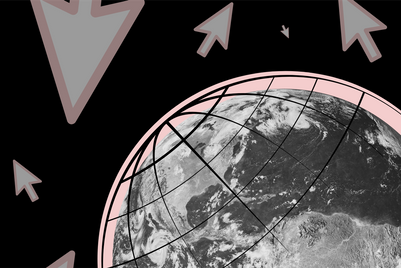
Many people have experienced a negative impact on their mental health during self-isolation. But while we've had physical restrictions imposed on us, our inner and emotional worlds have still been free to roam and interact with the digital world in new and unprecedented ways.
In this situation, how brands use digital UX and digital design have come to play a key role in helping us stay connected, feel less isolated, and meet our day-to-day practical needs, highlighting what we really need from digital UX, as well as triggering some shifts in how it’s being used.
Perhaps unsurprisingly, digital entertainment products have seen a huge surge over the last few months. But as well as providing relief from boredom, these platforms have increasingly been used to meet our needs for emotional connection. There’s been a shift here in that instead of placing the game or content as the focal point of the experience, the focus of the UX is towards reducing feelings of isolation via rich personalisation and facilitating connection with others.
The latest version of Animal Crossing—the extremely popular Nintendo game—was released in March and is a timely example of this. In the game, players become an animal and escape to a deserted island to create their own paradise, which they must manage and nurture. The game is designed with a lot of in-built randomness, prompting players to communicate and explore, and players can interact with other animals—family and friends—and visit each other’s islands.

Perhaps the most admirable thing about the UX experience is that it is slow. Nothing is rushed. The combination of creative escapism, slowing down the pace, the high degree of personalisation, and the way it encourages communication had made it a soul-saving digital product for millions during the epidemic. This approach to UX is likely to stay with us post-pandemic.
Security and privacy
Away from entertainment, there has also been renewed focus on security and privacy—already major issues within digital design. At this uncomfortable time, we have needed a sense of security more than ever. When addressing such innate human feelings and needs with digital means, there must be a seamless connection between the online and offline experience: how issues of security and privacy are handled through digital UX must resonate with, and connect, to our experience in the everyday world.
It’s been very interesting to see this play out in the different approaches to coronavirus contact tracing apps. For most people, the real-word experience here is that they proactively want to ‘do their bit’ to help stop the pandemic. Giving sensitive data via an app is how they can do that right now, and the UX design must demonstrate a sense of integrity and transparency in how this data is being used and stored, otherwise there is a disconnect that could prompt distrust. The outcome from ongoing discussions about the different approaches by countries to store all data centrally versus decentralising the data storage to give users more control, is likely to dictate how brands approach the UX around data and privacy in the future.
Ecommerce
Another huge area of focus and change for digital UX has been, of course, ecommerce. Traditionally, most retailers focus the UX journey around completing the transaction, overlooking what customers are most concerned about: the timing, delivery and logistics of their order. This approach often means customers only realise the delivery timings aren’t going to work after the order is complete, increasing customer service costs and lowering brand loyalty.
The change we’re seeing now is that the UX journey is moving away from the transaction alone and consumer concerns about logistics are being addressed at the first step. In China, the 'JD to Home' app lists all the different local merchants by product category, such as 'vegetables', 'flowers' and 'bread', on the homepage and presents them by marking their distance from your home and delivery times. Merchants have also been integrating resources to provide special services if items are needed urgently and best of all, the app provides additional services offline. During the outbreak, a dedicated person was stationed in each residential area to stay outside and manage all goods arriving.
This level of service and resilience really helped people make the best of the situation during the outbreak and is another example of how designing the online and offline experiences to seamlessly connect provides the best possible experience. Unprecedented UX interventions like this will have a lasting impact on ecommerce going forward.
It’s been fascinating judging this year’s D&AD Digital Design award to see the diverse ways creatives have addressed all of these issues, and many more, over the past year. It’s got me thinking a lot about what we can learn from physical UX.

One of my favourite examples here is The Miho Museum in Japan by architect Ieoh Ming Pe, famous for the glass pyramid of the Louvre. The whole UX journey from departure, transition, experience and discovery is extremely rich—from arriving via a mysterious tunnel, crossing a bridge, and discovering the museum hidden in the mountains, the architecture of which facilitates connections to nature.
These rich experiences are what consumers are increasingly coming to expect from digital too. Whatever the product or service, the path must be clear, engaging and always be contributing to the overall experience. It’s great to see this kind of approach in a lot of the D&AD submissions and I very much believe that the new challenges we’re now facing will prove to be a catalyst that inspires us to create even better, more relevant and more engaging digital experiences in the years go come.
Akae Wang, executive creative director at Tencent, is on the jury for the Digital Design award at D&AD Awards 2020



.jpg&h=334&w=500&q=100&v=20250320&c=1)

.jpg&h=334&w=500&q=100&v=20250320&c=1)

.jpg&h=334&w=500&q=100&v=20250320&c=1)







.jpg&h=268&w=401&q=100&v=20250320&c=1)
.png&h=268&w=401&q=100&v=20250320&c=1)


.jpg&h=268&w=401&q=100&v=20250320&c=1)
